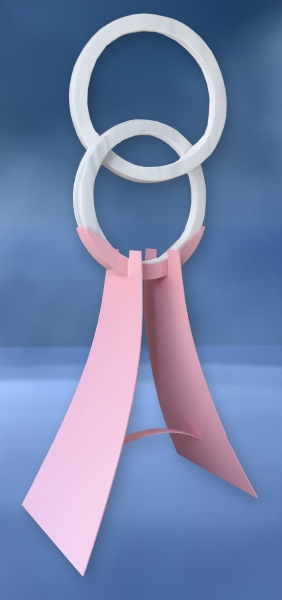 Avi Sperber has expanded the range of well-known traditional art via his sculpture, and has changed the way it is viewed, even as he holds a dialogue with its skeletal, historical qualities. The intention of Sperber’s art is, first of all, to confront the definitions that relate to conceptual art on the one hand and, on the other, to real concepts that are based on authentic and allegorical symbols and objects that reflect the culture with which he is in dialogue.
Avi Sperber has expanded the range of well-known traditional art via his sculpture, and has changed the way it is viewed, even as he holds a dialogue with its skeletal, historical qualities. The intention of Sperber’s art is, first of all, to confront the definitions that relate to conceptual art on the one hand and, on the other, to real concepts that are based on authentic and allegorical symbols and objects that reflect the culture with which he is in dialogue.
One quote from David Piper’s book The Illustrated History of Art deals with the stone works of the Dadaist sculptor Jean Arp, who saw his sculpture as “tangible,” non-abstract, possessing forms that were organic and not artificial, moderated by the material that he chose to shape them and that stemmed from nature. Yet it should be noted that the artist’s subconscious and the hand of fate also had a part in their creation. It seems that this statement applies, with proper adaptation, to the ongoing work of Avi Sperber, who has been working for many years in his studio on Kibbutz Ein Carmel — an industrial workshop that is a lovely gem in the midst of nature, near the Carmel mountain range on one side and the shore of the Mediterranean Sea on the other.
Avi Sperber’s sculpting process is always accompanied by profound, persistent research of the secrets of the culture that he has taken on and from which he takes his inspiration. At the first stage, he builds a network of original compositions connected to his imagination and based on his vast knowledge as a traffic engineer, among other things. At the next stage, he creates a combination of the traditional cultural myth over time with what exists in the here and now, in its natural environment, with its social and political aspects, and concocts an artistic mixture that is fascinating, which is poured into his work, which is created from stone. All the sculptures come to birth by the traditional method of classic sculpture, which is based on carving from a block of stone. In most of his works in recent years, he combines additional and exceptional industrial materials such steel rods, plastic parts, and even actual feathers.
The monumental works of Avi Sperber that have been installed in public spaces under the open sky are a real attraction for those who view them, and create a fascinating dramatic dialogue for them. Among the works, one can cite the example of the heavy stone sculpture that is suspended on massive steel cables near the Diamond Exchange District in Ramat Gan — a sculpture in the shape of an eye, through which we look at the local landscape. Another work of stone that deals with celestial bodies, containing sculptures of the sun, the moon, and constellations, is installed in the garden of the Givatayim Theater. Part of it was placed at first in the indoor part of the building, and part of it outside. In this installation, Avi Sperber created an original, unique, and rare dialogue in our places, which enables the viewers to take in the combination and interference of the large outdoor sculpture, with its natural background, with the massive sculpture works within the space of the theater. The sculpture of the baby regarding its mother with compassion, made of bright white stone and placed in the sculpture garden of Sheba Medical Center, demonstrates his realistic and classical abilities and qualities as an artist who draws his inspiration from varied and different styles of sculpture. In the international sculpture project held in 2017 in honor of the Venice Biennale, in which he participated, as part of the Vanished Continents exhibition, he presented a sculpture made of salt and iron — a work that was placed on the roof of the Hotel Saturnia under the open sky. In this sculpture, Avi Sperber combined masks made of salt based on his own portrait, a series of masks that made up an impressive personal installation that corresponds with the cultural traditions of Venice throughout history.
Doron Polak, exhibition curator
Artists’ Museum, Israeli Center
 Stone-Speak: Avi Sperber’s Sculptures: A Personal Observation by Michael Sternberg
Stone-Speak: Avi Sperber’s Sculptures: A Personal Observation by Michael Sternberg